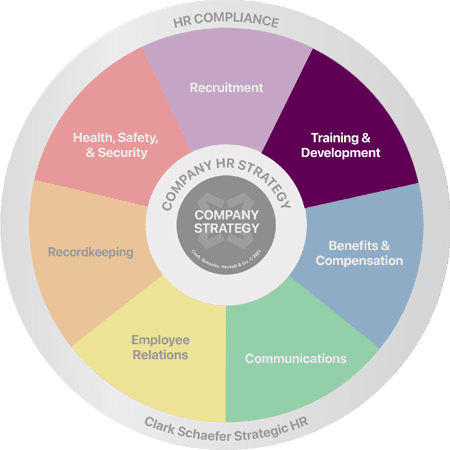How Long Should Training Programs Be?
Last Updated on March 9, 2022 / Training & Development
Question:
My manager has asked me to pull together training for our customer service department on phone skills. How long should I make the training?
Answer:
The key with training isn’t so much about the duration, but the relevance, value and timeliness of the topic. It’s no secret that training is sometimes seen as a double-edged sword. Done right, few argue the value of training. The challenge can be the time it takes away from our regular duties to train or to be trained. It helps when an organization sets a culture that values employee training and makes it a priority. Rather than focus on how long the training should, we recommend focusing on the value of the training.
First, identify what the training need is and how best to address that need. Sometimes training can be fairly brief, to cover a new process or policy. Make sure relevant details are shared, questions are answered, and possibly a demonstration included, to ensure understanding and compliance.
Other circumstances may require a different approach. Are you looking at training for an individual, a group or department, or the entire organization? That may help determine the topic details and the duration of the training. For example, let’s look at supervisors who have been in their the role for less than a year – they will require New Supervisor Training. Identify which specific topics need to be covered for this type of training, i.e. HR Compliance, Coaching and Counseling, and Performance Management. Is it better to conduct this training in day long sessions, or possibly more incrementally over time? Once you have established this, you can move forward with planning.
Other things to keep in mind:
- It is critical to match the training to the needs of the organization. While there is no one-size-fits-all formula for determining training needs, a needs assessment can be of great value on all levels, to aid in doing so.
- Try to provide coverage while an employee or employees are attending training. This will help ease the stress of being away from the job.
- Timeliness is also important. If there is a deadline to implement a new process or policy, make sure the relevant employees are trained well in advance of that deadline, to allow time to address any questions or concerns.
Bottom line, the training that is provided must be the right fit for those to whom it is intended. As long as you are providing the right training and the right topics you will accomplish your bottom line.
Get your Training and Development program off to the right start by asking Strategic HR to help. We have the expertise to conduct a Needs Assessment and/or to recommend training options for your staff. Visit our Training & Development page to learn how we can help you train your employees efficiently and thoroughly.




